
Benefit from the Survival Strength System. By visiting our blog you will be able to enhance your own skills and benefit from our advanced beekeeping knowledge. Getting help when you need it … wow!
Now you have the opportunity to have exclusive access to expert advice – when you need some help. You will be able to avoid costly mistakes that will save you time and money.
You will develop a deeper connection with your bees. There´s NOTHING like the keeping bees alive „community“ – there are HUNDREDS out there just like you who will be on this journey as a united community.

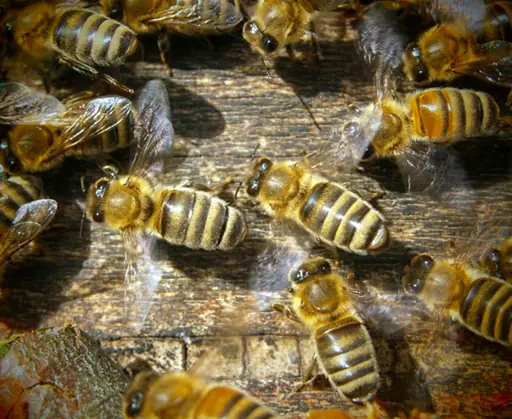
Here are some quotes from the speech, that Dr. Miriam Stock held on the occasion of the autumn meeting of the fruit and horticultural association Hausen (Imker-Kreisverband Kelheim):
Some events and numbers of worldwide bee mortality
90% of bee colonies mysteriously disappeared in some states of the U.S.A. (colony collapse disorder)
53% of European bee colonies died in the past winters
85% decrease in the population of bee colonies in the Middle East (Note: bee colonies are particularly important for maintaining the vegetation and for the water balance)
Numbers in Germany
In 1950: 2,500,000 bee colonies (2.5 million colonies)
In 2018: 590,000 bee colonies (0.59 million colonies)
Currently, the colony stock is only 23% of the numbers of the 50s. However, the current population is much less well-distributed than it was then, as most bee colonies are now in the metropolises, while in the fifties most bee colonies were located on farms. There are currently many more bees in the city than in the countryside. An alarming development with ever-larger areas of landscapes without bees.
The three causes of bee mortality
Beetle plants
Among the beetle plants that are valuable for both beetles and butterflies include the Umbelliferae, such as the wild carrot or the elderberry
Do not use hazardous chemicals in the garden!
All anti-ants remedies are very dangerous to bees and affect the bees as much as the ants. There are no ant-specific remedies. Bees are equally affected.

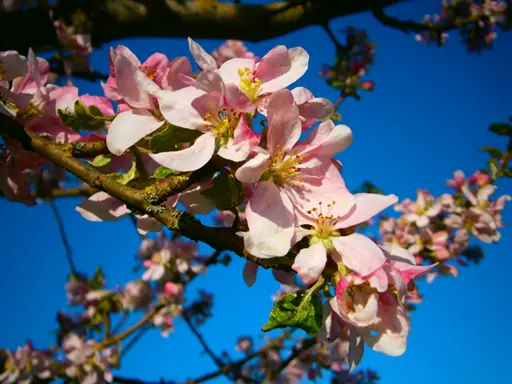
Counteract bee mortality
Gardeners can close the nutrition gaps for the bees by deliberately planting bee-trees and sowing flower meadows, thus preventing the malnutrition of the bees.
The gardeners and fruit growers can thereby counteract the bee mortality in their area.
(From the handwritten notes of H. G. Oswald during the lecture by Dr. Miriam Stock)
Today, I witnessed the murder of an estimated 10,000 to 20,000 of my honey bees and additionally about 5,000 bumblebees and butterflies!
Therefore, I am accordingly shocked and determined to describe the case, so that the public learns the truth about this aspect of bee losses. An aspect that has remained relatively unnoticed until now, but responsible for the cruel death of honeybees in infinite numbers.
The drama happened this way:
On this day, I drove from one of my hive’s location to the next apiary at about 4:45 pm. It was the best bee weather with a temperature above 20° Celsius or 68° Fahrenheit.
I drove on a small, rarely used country road.
These very warm late summer days are rather rare, so the bees use these warm afternoons intensively to collect even the last nectar before it gets cold again.
When I was still about 900 yards away from my apiary, I saw a field at the edge of the forest, which was cultivated with a flowering mixture of Phacelia (also called bee pasture) and sunflowers.
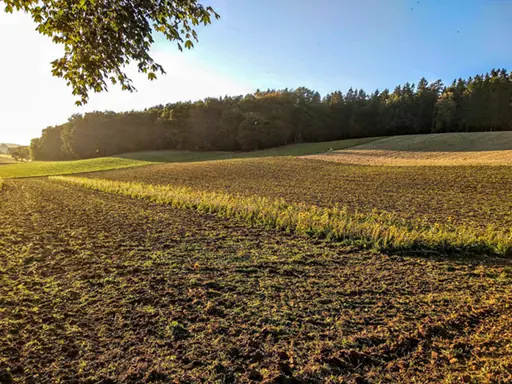

I was horrified to see that the farmer was preparing to work the flowers into the ground at relatively high speeds using a tillage equipment combination.
I instantly knew that my bees were in mortal danger. But since I could not see the entrance to the field from the road, I first drove in the direction of my nearby apiary. In the process, I had hoped that maybe my bees were not going to visit that field and had found another source of nectar.
However, when I arrived at the apiary, I realized that the said field was the only one of it’s kind, and therefore would be especially attractive to the bees, and they would most likely be there. I immediately turned Land Cruiser around and looked for the entrance to the field, and I managed to find it.
Meanwhile, due to the relatively high speed of the tractor, the field of flowers was reduced to this narrow strip (see picture).
Waving my arms like a mad man, I signalled to the tractor driver to stop. Even before I could say anything, he immediately began to justify himself by saying, „I did not see any bees,“ only bumblebees.
Incidentally, I would like to say as an author: Bumblebees are also part of the bee genus, so in fact they are also bees.
Instead of letting myself in on his justification attempts, I looked at the blooming phacelia blossoms, which were diligently occupied by honey bees interspersed with many bumblebees and butterflies.
Then the tractor driver said: „I don’t drive at top speed and I thought the bumblebees and bees can fly away before the machine takes them.“
To this I replied: „The honeybees and bumblebees are so concentrated in their collecting activity that only a small fraction escapes alive.“
The tractor driver then stopped with his excuses. I told him it was damage to my property in the light of the nearby apiary, and asked if he was prepared to compensate for the damages. I suggested the mulching can also be made without any problems outside of the main flight times of the bees. Thereupon he remained silent, but then expressed the intention to take a break, and to finish the last strip at dusk. He drove away.
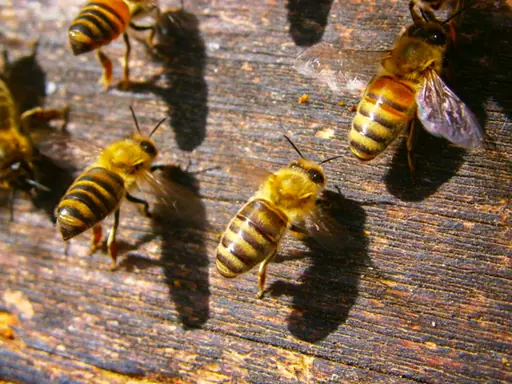

Then I drove to the apiary and watched the holes of the prey. Due to the thoughtlessness of the farmer, my eight colonies in the apiary had lost 10 to 20 thousand bees within a half hour. The flight bees were thrown from the flowers by the tillage implement and buried alive in the ground at lightning speed, along with thousands of bumblebees and many butterflies. There are even bee-friendly farming methods, so-called deflectors, which are a kind of light curtain that warns the bees in front of the tractor, so that they have a greater chance of escape. But this only makes sense if slow walking speed is used.
What is left of this attack on my bees? In each of my bee colonies there are now a few thousand bees missing. In winter, it becomes much harder for the bees to maintain the required nest temperature. The metabolism of the bees is then overwhelmed and the winter dead fall increases. It is possible that my low stock of bee colonies will continue to decline. All my efforts day after day for the bees were nullified within a few moments.
Hans Georg Oswald (beekeeper) 09/27/2018
I prefer having my honeybee hives in the forest. Bees love the forest. It protects them from heavy wind and rain, and provides them with many different kind of wild nectar sources and occasionally also honeydew. They also find uncontaminated water easily within the forest.
Pollen is the most important food for our honeybees. With lots of fresh pollen coming in, the honeybees gain strength and confidence. The pollen is changing their state of being completely. Pollen contains substances that are connected to growth and reproduction, but also love of live. People can use pollen as a drink as well as a food. Simply put one tablespoon of pollen in a glass of orange juice or apple juice, and blend or mix it until it gets foamy. Believe it or not, but it can replace a complete meal!
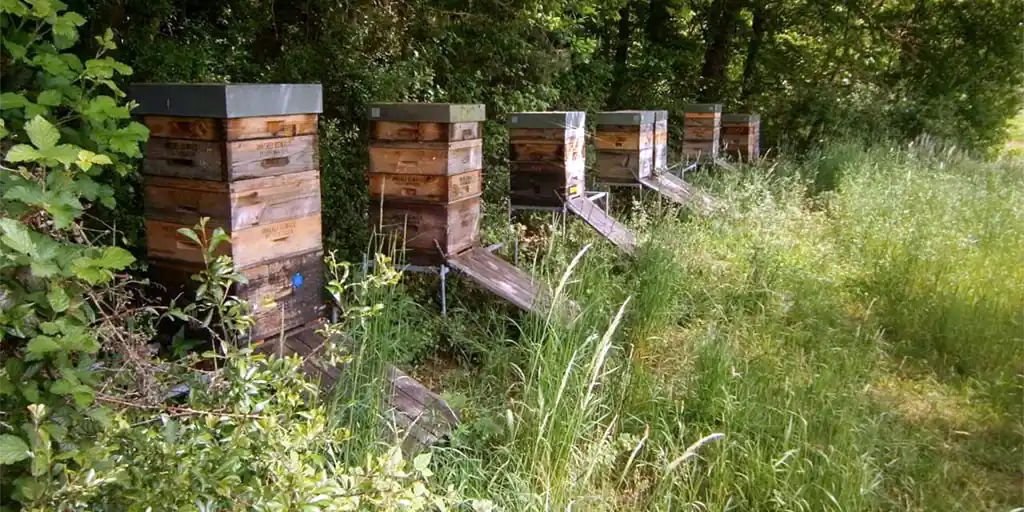
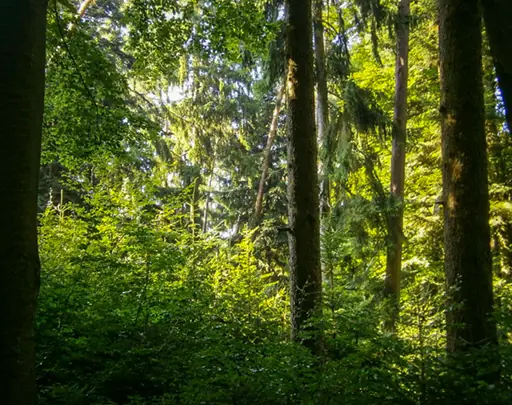
The bees in the second half of September are now largely retreating into the hive into their nest, where they are kept warm.
Occasionally the avid water collectors collect some fresh water on the provided lava stone in a shallow trough of fresh water.
Only on days when the temperature rises significantly above twenty degrees, it is expected to see more flying action again.
Informed beekeepers see this with mixed feelings at this time of year, because of the dangers from the state subsidized greening areas that are now beginning to bloom on the fields.
Indian summer is the nicest time of the year to be in the woods. Our honeybees are eagerly collecting propolis. We harvest this highly important bee product every week by scratching it off fresh from the ends of the top bars of the frames of the hive.
Right now is the time of the hop harvest and also time for last preparations to get the honeybees ready for the winter. The colonies weigh now on average 54 kg, that is heavier than usual (normally 50kg).
In November, we enter a difficult season for our bees, the time of the year known as winter.
A miracle is the survival of the bees in an freezing environment.
We keeping-bees-alive-beekeepers are always surrounded by miracles, yet most of the time they go unnoticed because we are so distracted in our every day activities.
In the wintertime, we do not need to put forth very much effort in order to recognize the miracle of survival in a hostile environment.
As we enter the new month, we should make an effort to recognize and appreciate our little striped friends more than ever.
What sort of great miracle the honeybees are in our life!
How does recognizing them shift your consciousness and outlook on life?
May we recognize the bees and their great task of making the world a better and nicer place to live.
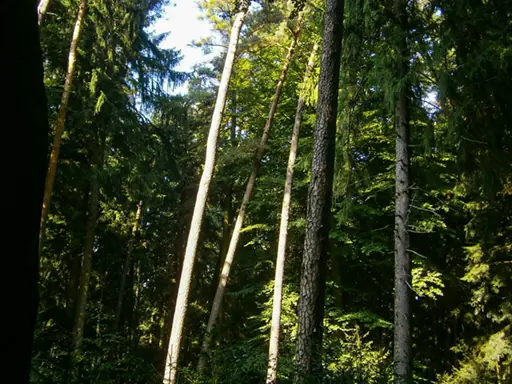
For months we can have cloudy, rainy and icy weather … which is bad for our bee colonies.
Honey bees love sunny weather.
While it is getting frosty in the northern hemisphere, our little striped „sun birds“ are snuggled closely together in their hive. Non beekeepers think that they are sleeping, but bees are literally always keeping an open eye and keep a close watch on the weather, the planets, the sun, and the moon and the stars.
They can actually feel the impact of the sun, the moon and the stars because their whole life is so closely connected to this cosmic energy.
I want to wish you all and your honeybees a joyous New Year rich with honey and everything. Three hundred sixty-five days a year you were there for the striped friends, giving them everything they need to succeed. Thank you all for all you do to make this happen. While you might not be able to save every colony of the world, you are sure making a world of difference for each and every one of your own honeybee colonies.

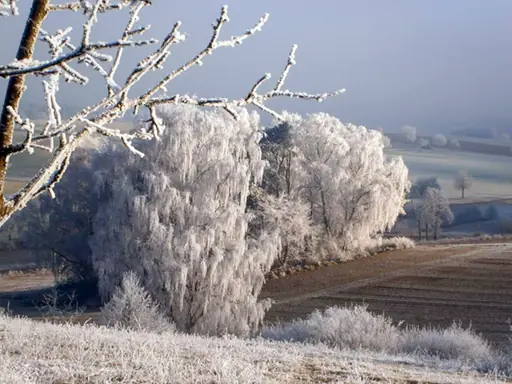
Sometimes a queen gets lost during the winter.
This happens normally in about one out of every twenty-five hives.
How can we find out if this is the case?
Simply by the sound and the behaviour of the honeybees.
When such a „queen-less“ hive is opened the honeybees are humming frenetically in a low tone, and by the same time tremble simultaneously with their wing muscles.
You can even hear it without opening the hive by placing your ear near the hive entrance.
Once we have localized the queen-less hive, we can try to #savethebees by doing this:
Here is my important advice to you as a beekeeper:
When the temperature rises above 5° Celsius (41° Fahrenheit) don´t hesitate to weigh the bee colonies by lifting them carefully from behind.
Before you start, use a little smoke to give the bees a chance to be prepared.
Normally you will find that one or two colonies out of ten are too light weighted.
There are two reasons for that:
Once you have discovered these light weighted colonies, you should open them, and you should give them spare extra heavy frames of honeycombs filled with honey.
You can warm them up 48 hours before you start distributing them.
Thereby you will surely save at least 20% of your colonies from starvation and loss.

The honeybee, our little friend, needs water to drink before the nectar flow is starting. At your home apiary you can set up a drinking well near the hives. Place it three feet above the ground on a log or something else to make it easy for the honeybees to start and land. It should be at sunny spot and protected from heavy winds. Fill it up every day in the morning with rain water. Place a porous black lava stone in the middle (about the size of a football), so the bees won´t slip off and fall inside the drinking well.
The willow blossom is the right time for a quick examination of the hives.
Before I open the hive, I look if bees are bringing pollen packages.
This is the sure sign for a egg laying queen.
Next, I weigh the hive in order to know what´s going on within the hive, and write the weight at the back of the hive.
When I open the hive, I look closely if the colony has a satisfied appearance, this is the second sign for a queen and brood rearing.
After this is checked positively, I give a drone frame as the 8th frame out of 12.
The brood nests usually sits between frame 2 and 6 in early spring.
It´s great to see our striped friends so alive.
I´m especially glad because I had checked the weight of this fine colony on the video twice during winter, the first time in December, and the second time in January.
Each time I had to take out to empty combs and replace them with two heavy combs at the side.
It was well worth the effort, otherwise they won´t be here anymore.
And I think the bees are even more happy then I am.
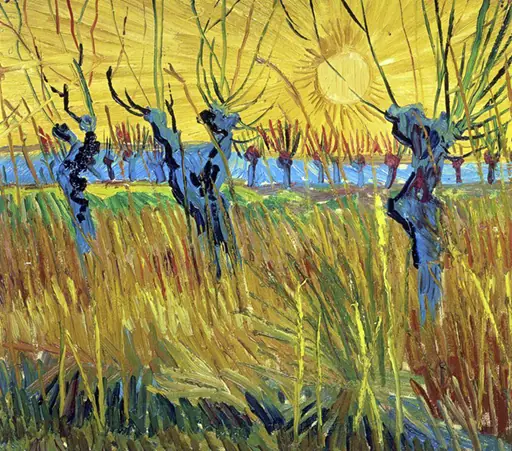

Before the honey flow started, I reduced the brood nest size to 8 Dadant frames. With the excess bees and combs I formed new colonies at a different site.
Pictures of blooming trees.
It is the old variety „Kirchensaller Mostbirne“, a robust tree that is found even in the alps up to 1,000 meter altitude.
The beginnings of my beekeeping took place 1997 nearby this old German castle.
I was 28 years old at that time and I caught many swarms around this castle.
A drawing of this landmark is on the label of my blossom honey jars.
The month of May is about swarming. In short, the bee colony is renewing itself, is getting rid of diseases and parasites and has a chance to immigrate to a better location. The old colony is saving resources by letting the majority go.
The swarm sometimes chooses an oak for a rest.
It helps the swarm to provide a little shade for them to cool off.
In the early morning I close the entrance and carry the swarm in a cool and dark place to rest for 24 hours, and then carry them to the new location, where they get between 5 and 7 empty frames for building combs.
Honey bees love oaks.
Oak trees can get 1,000 years old and are the natural habitat for honey bees.
These trees provide shelter and warmth.
The oak tree prefers places with lots of light and also warm places.
That´s why oak trees are good indicators for the decision where to start your apiary.
If there are no oak trees around, just plant one next to each hive.
They also will be good swarm catchers.
Harvesting blossom honey with the use of a self constructed bee escape, which consists of a combination of two different kind of bee escapes, the LEGA bee escape (metal) and a PORTER bee escape (plastic). The advantage of the Porter bee escape is the big fragrant grid, because when it´s very warm and honey is dripping, then the small LEGA bee escape can be blocked by dripping honey.The advantage of the LEGA type is that you can place the small exits in the corners, thereby the honey supers will be almost completely empty. Another advantage of the LEGA escape is that the bees don´t find their way back so easily. I think to combine two systems is the ideal option.
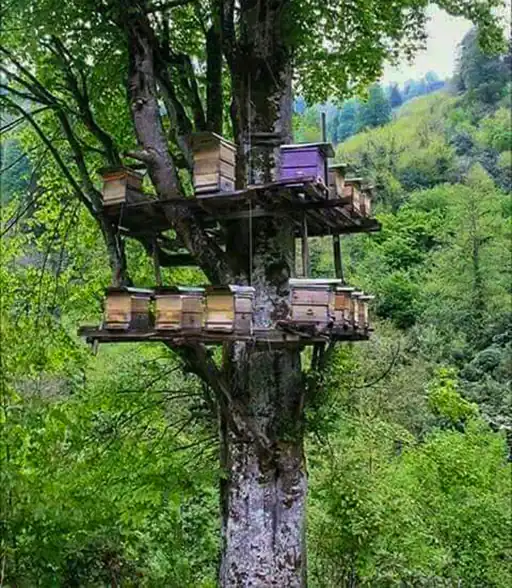
A late swarm in July is also appreciated, as always. Every swarm is a manifestation of the honey bees strong will to survive, to expand and to conquer new honey grounds. Every true beekeeper should draw his hat whenever encountering swarming honeybees.
— End of monthly reflections —

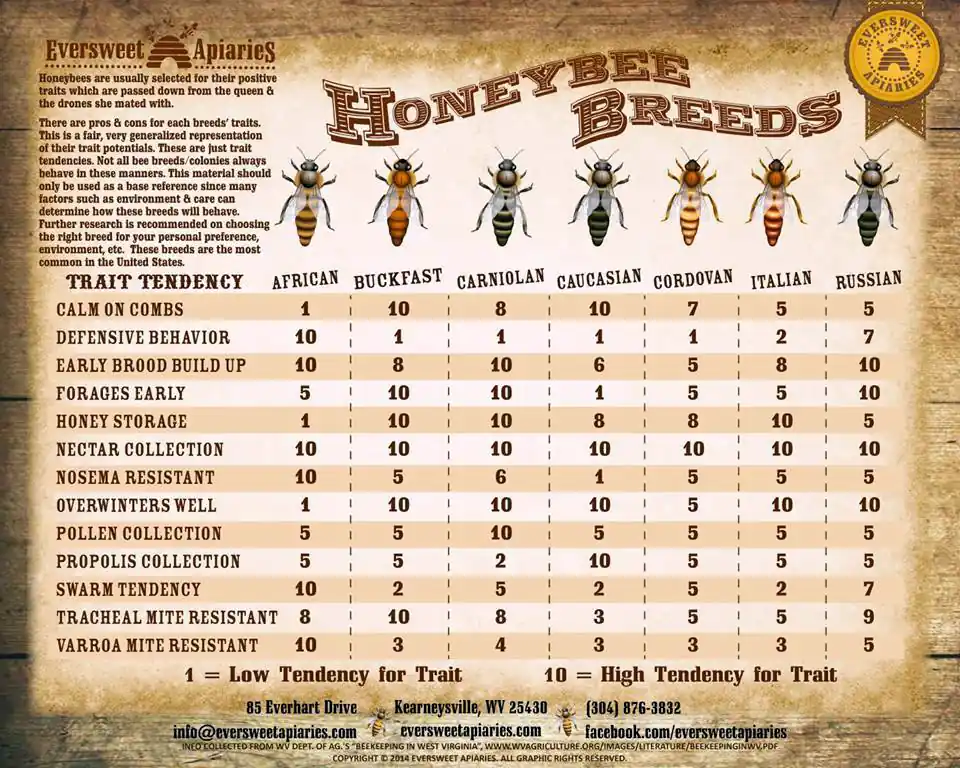
Video coming soon … a small technical issue.
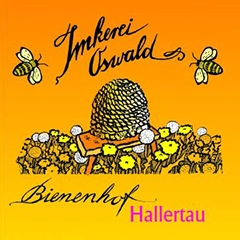


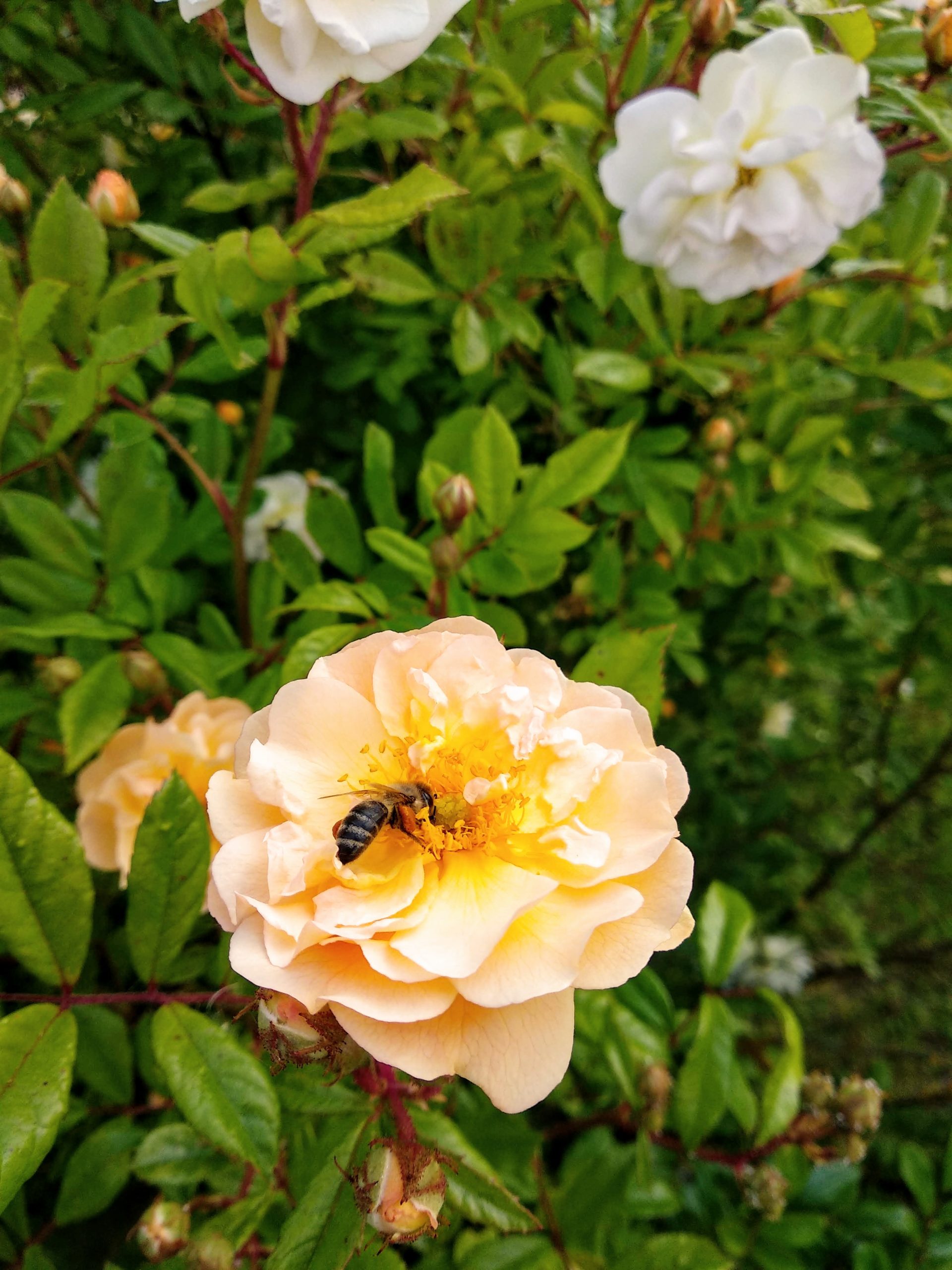
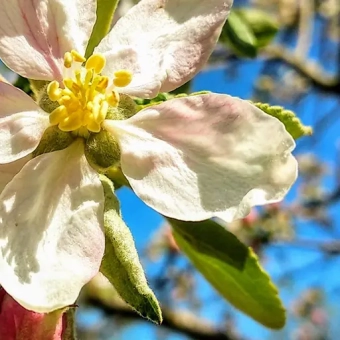
The first comment sent from my mobile phone.
Na, hier ist der erste Kommentar.